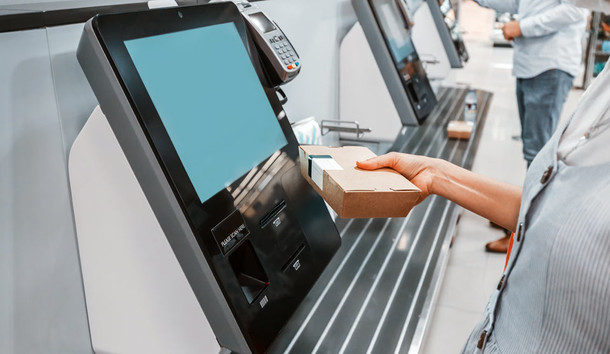The Changing Face of Retail: Three Key Trends in Retail Automation
As the current economic situation continues to look downcast, retailers are not the only businesses who are looking to do more with less. One way that retailers can minimise costs and maximise budgets is through automation.
When you stop to consider it, automation isn’t a new trend that’s currently making waves in the media. It’s simply part of a continued progression and evolution of technology. Robots have been doing some manufacturing jobs for many years now. Stock and inventory management has evolved from simply logging numbers and data, to advising on optimal stock levels and the best ROIs.
Email marketing software has been sending campaign autoresponders for many years. Sales personalisation tools have been making purchasing recommendations which continue to become more sophisticated and precise. Automation is simply the continuation and evolution of these practices.
Let’s look at three ways that some of these newer automations are helping to shape the face of retail:
Staffless retail
Amazon made quite a splash in 2018 with the opening of their first staff-free shopping experience. Since then, they have rolled out over 30 Amazon Go Stores globally, with more scheduled to open in the UK in 2023. (The exact number of new stores is presently unclear, as Amazon appear to have paused their rollout due to the current economic conditions.)(1)
Since launching, there have undoubtedly been some setbacks, but that hasn’t stopped many of the big supermarkets, including Tesco, Morrisons, Aldi and Sainsbury’s from all opening their own checkout-free stores to compete in this space.
Research in RBR’s Mobile Self Scanning and Checkout Free suggests that this is an area estimated to grow by 90% year on year, with over 12,000 checkout-free stores globally by 2027.(2)
Of course, there are many advantages for retailers with implementing stores of this kind. Fewer staff are required to operate them. Stock demands can all be fulfilled using automated ordering, despatch and delivery processes at the large retail warehouses which also serve the D2C online and delivery customer base. Right the way through the supply chain, cost savings and efficiencies can be made.
Virtual Influencers
We’ve all heard about B2B and B2C, but how about H2R?
No, it’s not an HR acronym, but it actually means Human to Robot.
One trend taking off is the rise of the virtual influencer. Yes, that’s right. For those who consider ‘influencing’ to be something of a nefarious career choice, the reality is that these roles are being usurped with the increasing popularity of virtual influencers.
Some virtual influencers already have millions of followers, and they are ready to promote your brand for an appropriate fee. No more dealing with the uncertainty of a tardy influencer, stumbled words or multiple takes to get something right.
Some organisations, such as Renault, have already developed their own virtual influencer. Other big-name brands are already using them too, including Coach, Dior and Balenciaga.
Virtual influencers aren’t simply a ‘big in Asia’ trend that will never take off over here. When asked, over half of UK consumers said that they found the idea of virtual influencers appealing.(3) Virtual influencers don't just appear in the metaverse. They are already widely used across the channels where you’d see regular influencers, such as Facebook, Instagram and Tik Tok. And they don’t all look like CGI versions of humans. Many look just like regular (albeit picture-perfect) human beings, many of whom have been designed to perfectly emulate brands’ target customer or aesthetic.
The virtual influencer market is already worth $4.6 billion and is expected to grow 26% by 2025.(4)
Automated content
You may have heard of ChatGPT. It’s currently being touted as an AI content creation solution for all kinds of things, from giving medical advice to creating email messages and even website content.
While content generation tools are undoubtedly useful, there remain some hurdles that the technology still needs to overcome. Firstly, the technology is still in its infancy. It only takes its sources from information that has been previously created, which means that it’s unable to operate with current trends, or breaking news. Secondly, because it's taking information from the most popular results, there is potential for it to be repeating content that is factually incorrect.
And finally, AI generated content has a formulaic style to how content is structured, which search engines can identify. While they have recently clarified their position that suggests that they are fine with accepting some types of AI generated content, they are still penalising lower quality and value content.(5)
That isn’t to say that content generation tools are useless, they simply have to be used in the right way. As technology improves, expect these content creation tools to become ever more useful for all.
So, where does that leave retailers?
Even smaller retailers can make use of the advantage that automation provides, using inexpensive marketing, content and logistics software. Many of these advances in automation technology are unquestionably a force for good. Improved customer data, streamlined, more efficient processes and automated solutions can better anticipate customer needs and requirements, to deliver a more personal service at a reduced cost.
Staff efforts can be focused on the business processes that matter, not the boring, manual tasks which can be successfully automated.
Delivering against all these objectives begins and ends with data. For retailers to take advantage of the new possibilities that automation is offering, they need to ensure that data is captured, tested, modelled and leveraged to meet customer demands.
References:
- Amazon halts rollout of Fresh stores across the UK | News | The Grocer
- Mobile Self-Scanning and Checkout-Free 2022 : RBR
- Virtual Influencers Survey + INFOGRAPHIC
- PREDICTIONS How retailers and brands may look to automation in 2023
- AI-Generated Content Not Against Its Policies: Google Clarifies - Spiceworks

